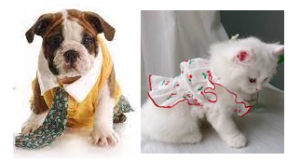
Do People Tend to Think of Dogs as Boys and Cats as Girls?
When thinking about cats and dogs, people often apply different sex-role stereotypes.
- Social psychologists define a stereotype as a generalized beliefs about a particular category of people. For example, the idea that engineers and mathematicians are always male, while nurses and elementary school teachers are all female. While society is improving in being more open in gender roles, researchers are finding that the stereotypes often begin in childhood literature and TV media.
- Researchers from Edinboro University in Pennsylvania first looked at gender stereotypes applied to humans. A study of 200 children’s books demonstrated that gender roles were applied to pretty much everything in children’s books. That includes anthropomorphized inanimate objects, such as trucks and bulldozers (who talk and have personalities and a clear gender), as well as nature-based entities, such as trees and clouds.

- To evaluate this in dogs and cats, a new study reviewed an online set of book clubs for kids. The idea was simply to note the gender of the principal characters in each of these books, whether canine or feline. In all cases, as much of the text was scanned as was needed to determine the sex of the cat or dog by the use of the words “his” or “her”, etc. A total of 274 books were scored (110 dogs, 150 cats, and 14 pairs consisting of a dog and a cat).
- Results clearly demonstrated that the representation of dogs is significantly biased toward males (86 percent). Female dogs make up only 11 percent of the characters and a smattering (3 percent) has no indicated gender. In cats is much more balanced, with 74 percent of the characters represented as males and 63 percent represented as females (this is a statistically nonsignificant difference). A higher proportion of cat characters were represented as gender-neutral (9 percent) than was the case of dogs.
- The difference between the percentage of dogs represented as males and the percentage of cats represented as males is statistically significant indicating that authors of children’s books have a stereotype that involves depicting dogs as males to a greater extent than cats.
- Dogs Are Boys and Cats Are Anything. The overall results are quite clear. There is a general bias toward representing canine characters as males, and that bias is not as strong when it comes to cats. So if you are walking your dog (without a pink color that may sway an impression), many people are more are more likely to say to you “he’s a handsome dog.”
- [Link]
